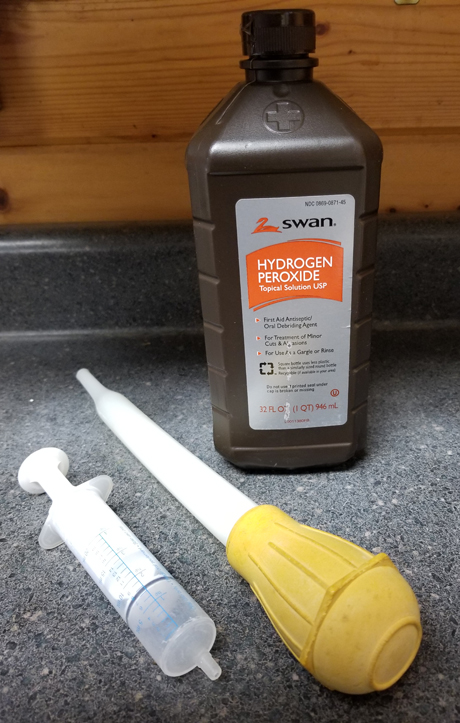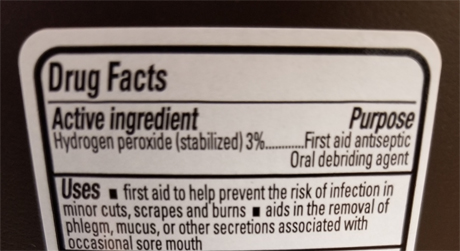Inducing emesis in dogs

The only items you need to induce emesis in a dog is a bottle 3% hydrogen peroxide and either a large syringe (no needle) or a turkey baster.
Some rudimentary medical knowledge can be very helpful when caring for a bird dog. In some circumstances, that knowledge can be vital to the dog’s life.
Inducing emesis, i.e., vomiting or throwing up, is one of those pieces of information.
Jerry and I have induced emesis several times. Once was when actual tick collars were still common and one dog ate the tick collar off its playmate in the exercise pen. Another time a dog ate an entire hard plastic chew toy that was rated for “Serious Chewers.” (We could actually piece the toy together afterward—not a bad way to ensure all the pieces are accounted for.)
Here’s a list of potentially dangerous items.
• chewed material from collars, chew toys and and other small items
• cleaning products
• human medications and pain relievers
• toxic foods like chocolate, grapes and raisins
• poison from garden and yard chemicals
• mouse, rat and insect poisons
• poisonous plants
Inducing emesis is an easy solution. The crucial element is time. The procedure must be done when the contents are still in stomach, which means within about 2 hours.
The only medication you need is a bottle of 3% hydrogen peroxide. The only tool you need is a big syringe (140cc with no needle) or a turkey baster.
Use 1 teaspoon hydrogen peroxide for every 10 lbs. of dog weight. (For example: use 4 teaspoons for a 40-lb. dog.) Squirt into the dog’s throat, behind the tongue. Wait for 10 – 15 minutes. It’s always worked on that first dose for us but, if necessary, repeat once more.
If your dog is showing signs of an adverse reaction or you’re at all unsure, call your vet and/or contact a poison hotline.
Do NOT induce emesis if the ingested item could be:
• glass, other sharp/hard object, batteries
• chemicals like bleach, oven cleaners, drain cleaners
• petroleum products such as gas, kerosene, motor oil
Possibilities of problems with those dangerous items are ingested include further damage to the esophagus or the possibility of the substance getting inhaled into the lungs.





